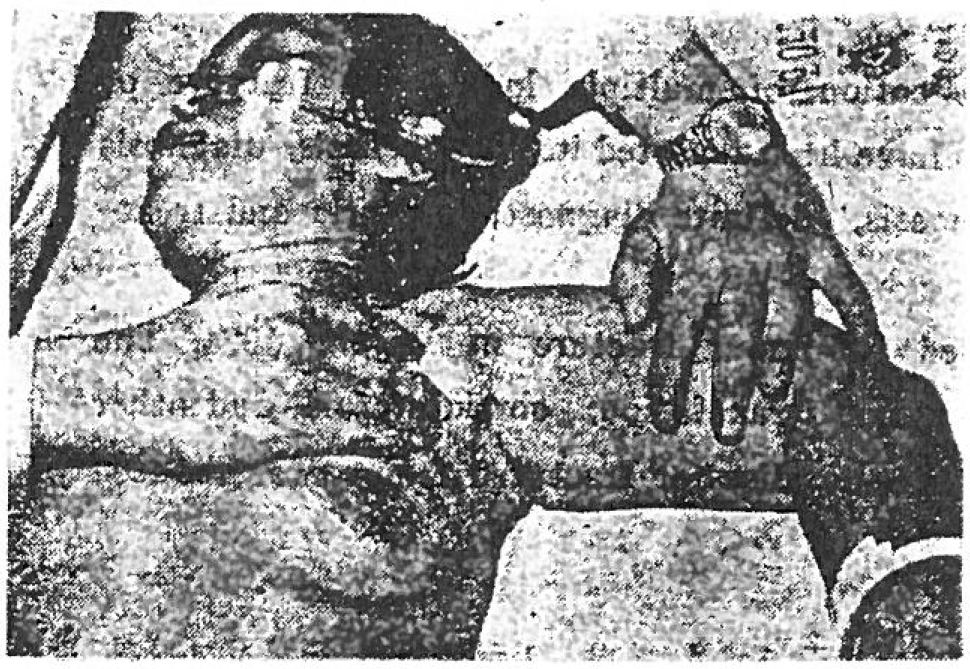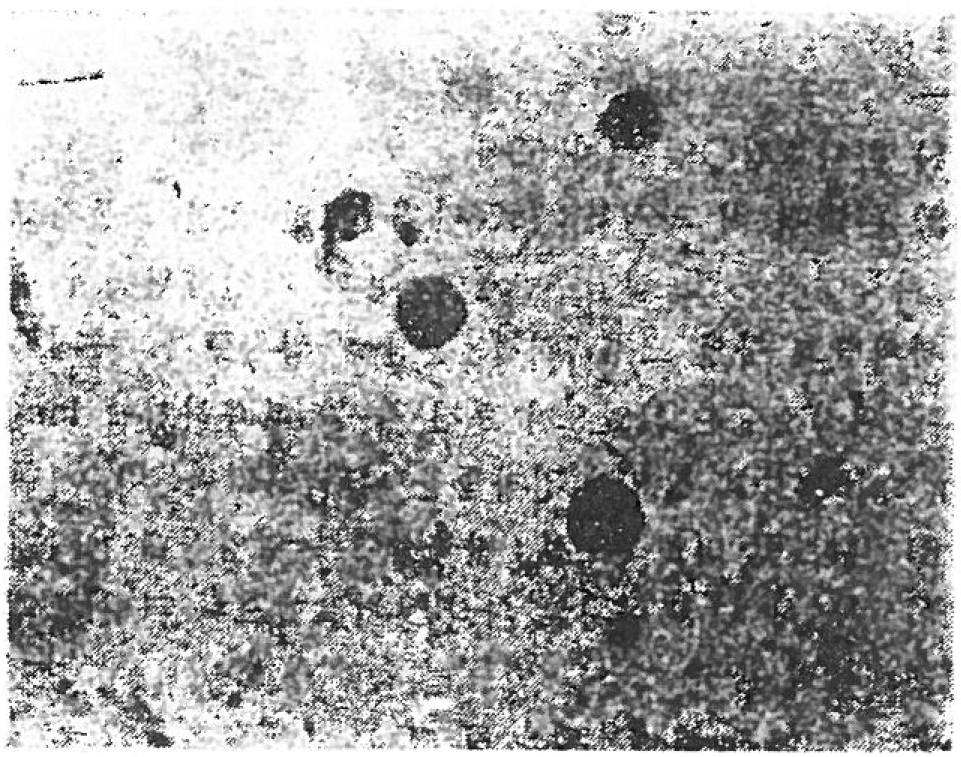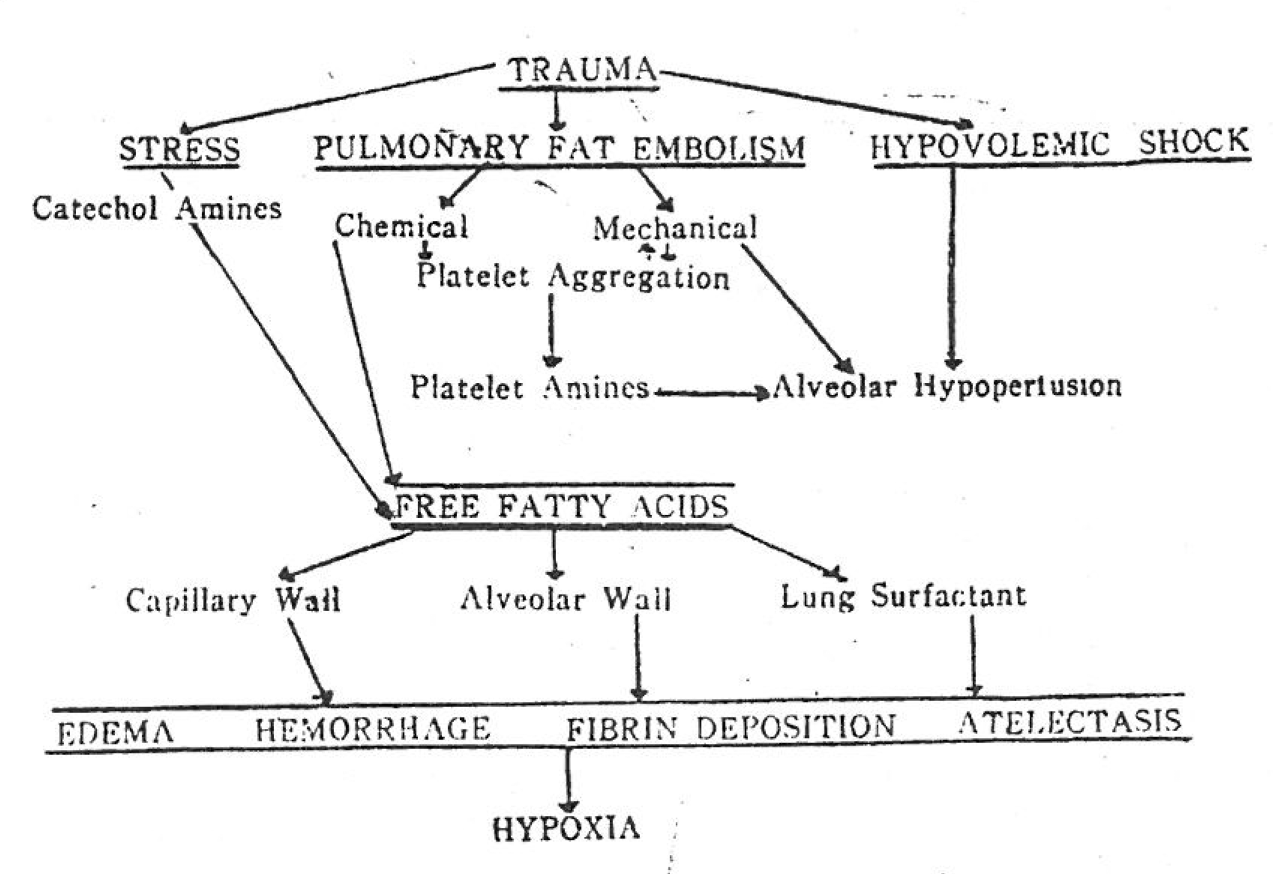Abstract
Fat embolism is a relatively rare catastrophic complication of multiple long bone fracture or extensive crushing injury to soft tissue. Many authors have been reported its pathogenesis, diagnosis and treatment, but still there were no certain pathogenesis, definite diagnostic criteria and treatment.
We have experienced a case of fat embolism followed by femur fracture in March, 1974. The patient was successfully treated with oxygen, whole blood transfusion, corticosteroid and other supportive measures. After satisfactory recover from embolic disaster fractured femur was reduced surgically with intramedullary Küntscher nailing.
REFERENCES
1. Atik M.Dextran 40 and Dextran 70 A review, Arch. Surg. 94:664–672. 1967.
2. Adler F., Peltier L.F.The laboratory diagnosis of fat embolism Clinical Orthopedics and related research. 21:226–231. 1961.
3. Bradford D.S., Harold M., Dick M.D.Fat embolism; Report of a case and discussion of ourrent of current concepts of pathogenesis and treatment. Clinical Orthopedics & related research. 1969; 65:221.
4. Berrigan T.J.Fat embolism: Röntgenographic pathologic correlation in 3 cases, Amer. Amer. J. Röntgen. 96:967. 1966.
6. Cobb C.A. Jr., Hillman J.W.Fat embolism; Instructional Course Lectures. The Amer. Academy of Orthopedic Surgeons. 1961; 18:122.
7. Chu J., Clements J.A.E.. The pulmonary hypoperfusion syndrome. Pediatrics. 35:733. 1965.
8. Care before and after surgery. Sampbell's Operative Orthopedics. 5th edition. vol. 1.6.:1971.
9. Evarts C.M.The diagnosis and treatment of fat embolism. J. A. M. A. 194:899. 1965.
10. Prevention of thromboembolic diseaseafter elective surgery of hip. J.B.J. vol. 53-A(No7):1971; (Oct).
11. Fushig P.A new clinical and experimental concent of fat embolism. New Engl. J. M. 276:1192. 1967.
12. Gelin L.E.Rheology disturbance and the use of low viscosity dextran in surgery. Rev Surg. 19:385–300. 1962.
13. Hapke E.J., Pederson H.J.Cytoplasmic activity in type I pulmonary epithelial cells induced by macroaggregated albumin. Science. 161:580. 1968.

14. Nash G., Blennerhassett J.B., Pontoppidan H.Pulmonary lesions associated with oxygen therapy and artificial ventilation. New Engl. J. Med. 267:368–374. 1967.

15. Nidan A.H.Bronchiolar and large alveolr cells in pulmonary phospholipid metabolism. Science. 158:1328. 1967.
16. Peltier L.F.Fat embolism. A current concept Clinical Orthopedics & related research. 66–241. 1969.
17. Peltier L.F.Fat enbolism. A pulmonary disease. Surg. 62:756. 1967.
19. Peltier L.F.Fat embolism. The prophylactic value of the tourniquet J.B.J. Surg. 38-A:835. 1956.
20. Peltier L.F.The diagnosis of fat embolism. Surg. Gyne. Obst. 121:371–379. 1965.
21. Sutnick A.I.I., Loloff L.A.Pulmonary arterial occlusion and surfactant production in human. Ann. Internal Med. 67–549. 1967.
22. Thomas D.P., Gurewich V.Pltelet adherence to thromboembli in relation to the pathogenesis and treatment of pulmonary embolism. New Engl. J. Med. 274:953. 1966.
Table 1
Criteria for the Clinical Diagnosis of Fat Embolism
| A history of skeletal injury |
| A history of hypovolemic shock |
| Petechial hemorrhages |
| Tachypnea and dyspnea |
| Disturbances of consciousness |
Table 2
Criteria for the Laboratory Diagnsis of Fat Embolism
| Lipuria |
| Elevation of the serum lipase |
| Chest x-ray |
| Electrocardiogram |
| Thrombocytopenia |
| Decreased arterial pO2 |
Table 3
Comparison of Features of Cerebral Fat Embolism and Craniocerebral Trauma




 PDF
PDF ePub
ePub Citation
Citation Print
Print





 XML Download
XML Download